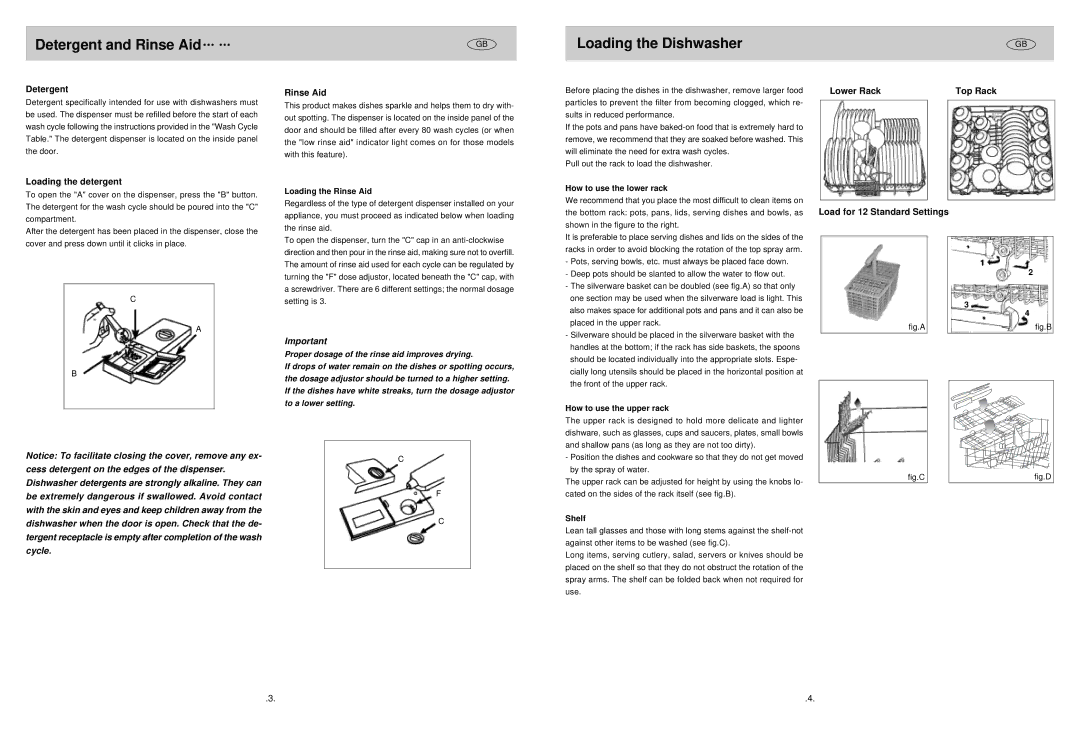HDW700BI specifications
The Haier HDW700BI is a high-performance built-in dishwasher designed to elevate kitchen convenience and efficiency. With its sleek and modern design, this appliance not only enhances the aesthetics of any kitchen but also promises outstanding cleaning capabilities.One of the standout features of the HDW700BI is its spacious interior, which can accommodate up to 16 place settings. This makes it an ideal choice for families or anyone who frequently entertains guests. The adjustable racks and foldable tines provide flexibility, allowing users to customize the interior space to fit larger pots and pans, which is often a challenge in many dishwashers.
The Haier HDW700BI is equipped with multiple wash cycles, providing users with options tailored to specific needs. From a quick wash for lightly soiled dishes to a heavy-duty cycle for stubborn grime, this dishwasher ensures optimal cleaning performance every time. Additionally, the delicate wash cycle is perfect for fragile items, offering peace of mind while washing glassware and china.
Energy efficiency is another key characteristic of the HDW700BI. With its Energy Star certification, this dishwasher not only reduces energy consumption but also contributes to lower utility bills. The eco-mode further enhances its efficiency by using less water and energy during cycles, making it an environmentally friendly choice for conscious consumers.
The innovative noise reduction technology in the Haier HDW700BI allows it to operate quietly, making it suitable for open-concept living spaces. With a noise level of just 45 dB, users can enjoy conversations or watch television without the distraction of a loud dishwasher running in the background.
Moreover, the HDW700BI features a delay start option, giving users the flexibility to set the washing cycle according to their convenience. With a sleek control panel that is user-friendly, selecting the desired cycle and options is straightforward and intuitive.
In summary, the Haier HDW700BI is a versatile, efficient, and stylish built-in dishwasher. Its generous capacity, various wash cycles, energy-saving technologies, and quiet operation make it an excellent choice for modern kitchens, ensuring that dishwashing becomes a hassle-free task. Whether you're a busy family or someone who enjoys entertaining, the HDW700BI delivers performance and convenience to meet all your dishwashing needs.

